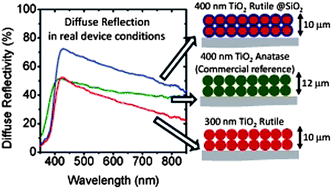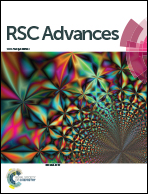Dielectric core–shells with enhanced scattering efficiency as back-reflectors in dye sensitized solar cells†
Abstract
Particulate back-reflector films are conventionally used for the improvement of light harvesting in dye solar cells (DSC). The back-reflection of the films is directly related to the scattering efficiency of the individual particles. Inspired by the idea of multilayer optical thin films, here it is demonstrated theoretically and experimentally that putting a SiO2 shell around spherical rutile-TiO2 particles leads to improved light scattering by the particles. These dielectric core–shells not only enhance the overall diffuse reflection of the films, but they also cause a relative improvement in the red and near infrared regions. Back-reflector films of these core–shell particles employed in DSCs result in an enhanced device efficiency of up to 9.52%. Contrary to the general notion, the conventional DSC back-reflector films are far from ideal, i.e. they show less than a 50% reflection in real device conditions. This is due to the limited thickness of the films (a few micron), as well as the low “wet” reflection of the back-reflector films, i.e. the reflection of the scattering particles embedded in a liquid electrolyte. This fact reveals the need for more optimized scattering particles. We suggest dielectric core–shell particles as an alternative.


 Please wait while we load your content...
Please wait while we load your content...